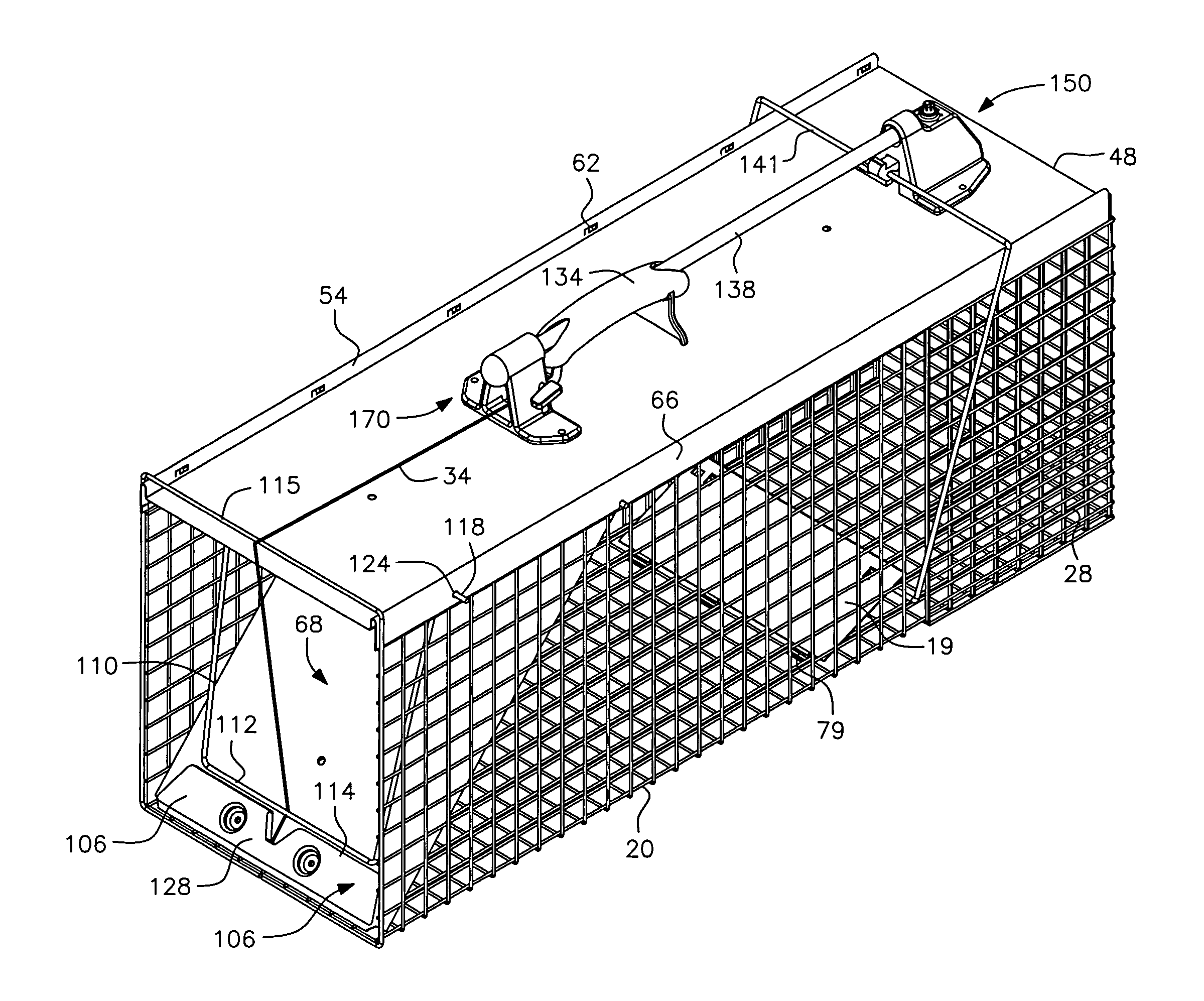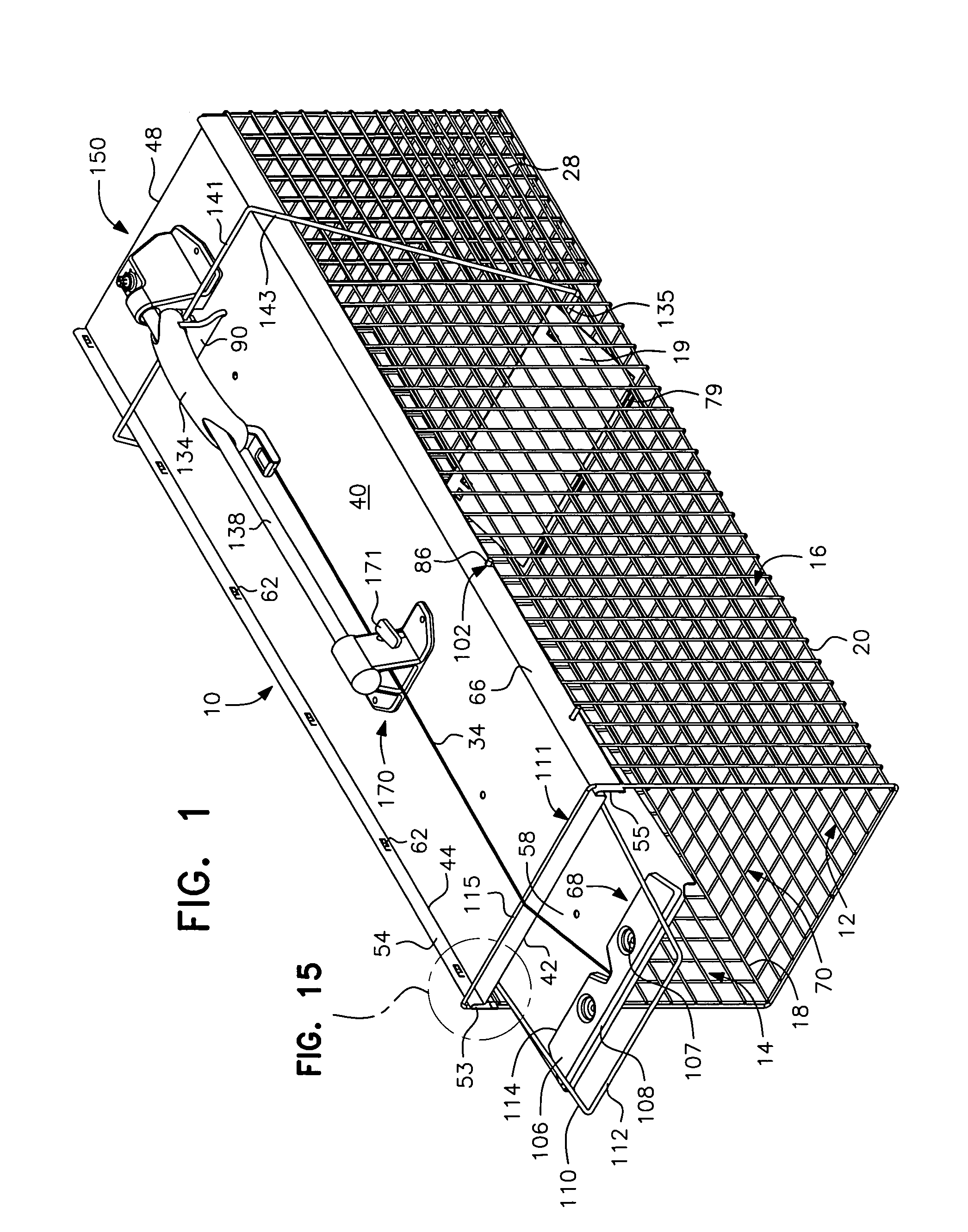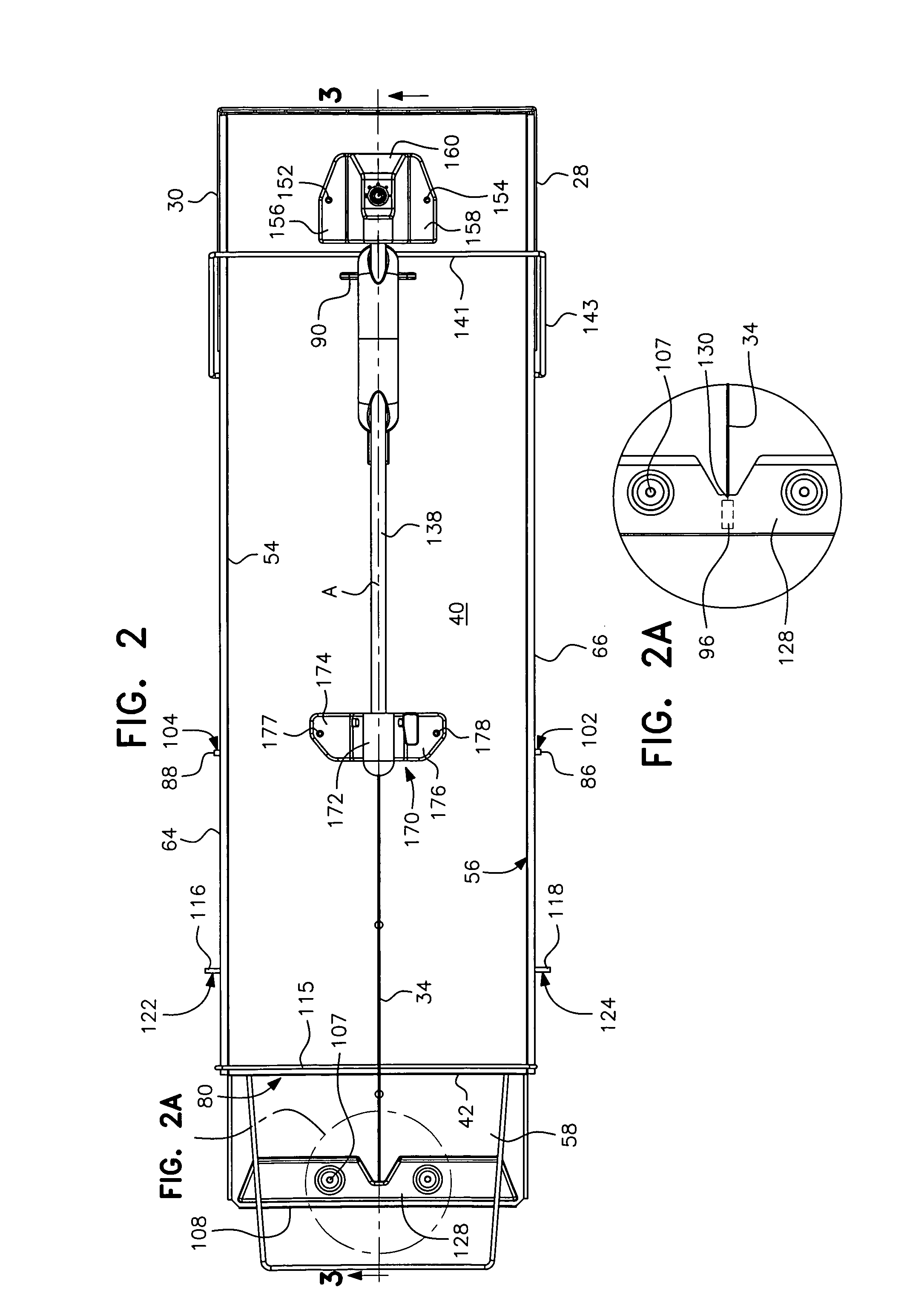Cage trap with easy set and release mechanism
a cage trap and release mechanism technology, applied in the field of cage traps, can solve the problems of the door closing trigger or actuation mechanism, the difficulty of keeping the cage trap door closed, and the trap relying on the cable mechanism, so as to achieve the effect of safe and easy release, safe and easy setting, and safe and easy releas
- Summary
- Abstract
- Description
- Claims
- Application Information
AI Technical Summary
Benefits of technology
Problems solved by technology
Method used
Image
Examples
Embodiment Construction
[0057]In describing preferred embodiments of the present invention illustrated in the drawings, specific terminology is employed for the sake of clarity. However, the invention is not intended to be limited to the specific terminology so selected, and it is to be understood that each specific element includes all technical equivalents that operate in a similar manner to accomplish a similar purpose.
[0058]With reference to FIGS. 1 to 3, 7 and 8, the cage trap of the present invention is generally designated by reference numeral 10. Trap 10 includes a box-like cage having an elongated base 12 and opposed sidewalls 14 and 16 preferably formed and folded from a single piece of wire mesh. The sidewalls emanate from the longitudinal edges 18 and 20 of the base 12 in an upward direction. The walls 14 and 16 define planes that are essentially parallel to each other.
[0059]As seen particularly in FIGS. 1 and 3, in the preferred form of the invention, the base 12 and side walls 14, 16 include ...
PUM
 Login to View More
Login to View More Abstract
Description
Claims
Application Information
 Login to View More
Login to View More - R&D
- Intellectual Property
- Life Sciences
- Materials
- Tech Scout
- Unparalleled Data Quality
- Higher Quality Content
- 60% Fewer Hallucinations
Browse by: Latest US Patents, China's latest patents, Technical Efficacy Thesaurus, Application Domain, Technology Topic, Popular Technical Reports.
© 2025 PatSnap. All rights reserved.Legal|Privacy policy|Modern Slavery Act Transparency Statement|Sitemap|About US| Contact US: help@patsnap.com



